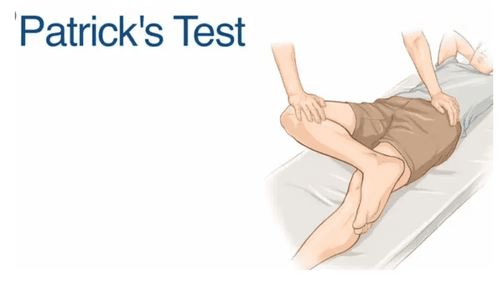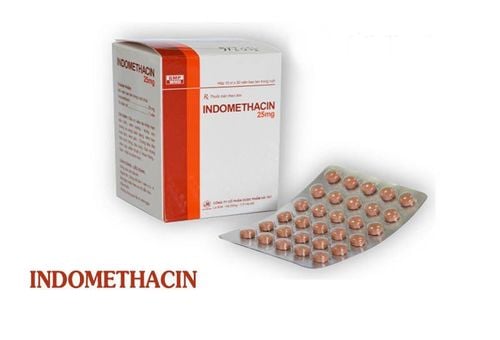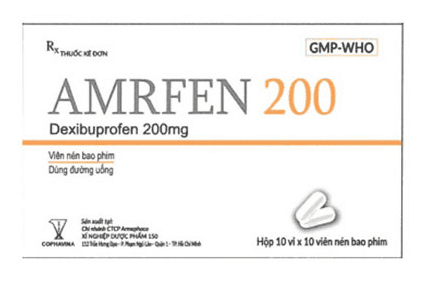This is an automatically translated article.
Sacroiliitis is inflammation of one or both joints between the sacrum and pelvis. This condition can cause pain in the buttocks or lower back that radiates down one or both legs. Continuous walking or climbing stairs will make the pain worse, greatly affecting the patient's daily activities.1. What is sacroiliitis?
Sacroiliitis is the medical term for inflammation that occurs at the junction between the sacrum and pelvis in the hip region of the body.In most cases sacroiliitis is recognized as part of the spondyloarthritis. Accordingly, conditions that fall into this group are referred to as "degenerative spondylitis," which includes conditions such as ankylosing spondylitis, psoriatic arthritis, and reactive arthritis.
In addition, sacroiliitis is sometimes a term used interchangeably with the term sacroiliac joint dysfunction. Because, in terms of the clinical approach, both conditions begin with similar pain originating in the sacroiliac joint. At the same time, both sacroiliitis or sacroiliac joint dysfunction are common causes of low back pain and pain that radiates down the leg.
However, the distinction between sacroiliitis and sacroiliac joint dysfunction lies in the presence of an inflammatory response that is always present in sacroiliitis; Meanwhile, sacral joint dysfunction can be inflammatory or non-inflammatory, resulting from abnormal movements in the sacrum or excessive movement or prolonged immobility.
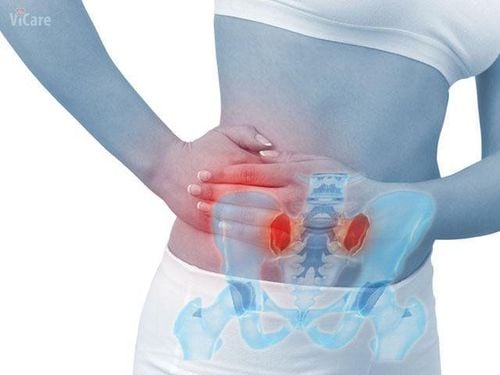
Trong đa số các trường hợp viêm khớp cùng chậu thường được nhận định như là một phần của tình trạng viêm cột sống
2. What are the causes of sacroiliitis?
Similar to other types of arthritis, sacroiliitis has the following groups of causes:Osteoarthritis This condition is one of the manifestations of degeneration in tissues in the body over time. This is when there is a breakdown of the cartilage in the joints, making the joints swollen, painful, and difficult to move. Meanwhile, the sacroiliac joint is a large joint, playing an important role in transferring the weight of the upper body to the two limbs. It is such high pressure that is always placed on the two joints in the same pelvis when walking, standing, and also when sitting, the joints are very vulnerable to degeneration, forming bone spurs around the joints, leading to pain and dysfunction.
Rheumatoid Arthritis While the initial symptoms of rheumatoid arthritis usually affect small joints, such as those in the hands and wrists, some patients have them in the sacroiliac joints. At this point, the immune system attacks the joints, leading to arthritis. The synovial membrane thickens abnormally, causing joint pain, swelling, and stiffness with movement.
Systemic lupus erythematosus Many areas of the body can be affected by lupus, including the skin, blood, kidneys, brain, other organs and as well as joints, including the sacroiliac joints. At this time, the symptoms of swelling and pain in the lumbar region should be recognized as a suggestive criterion for the diagnosis of this systemic disease.
Ankylosing spondylitis This autoimmune form of arthritis causes inflammation of the joints, ligaments and tendons. Often, joint pain and ankylosing spondylitis are the initial symptoms of ankylosing spondylitis, including sacroiliac joints. One difference, however, from other autoimmune conditions is that ankylosing spondylitis usually affects men with a 2 to 3 times higher risk of developing the disease than women.
Psoriatic arthritis Like ankylosing spondylitis, psoriatic arthritis is also a chronic autoimmune disease and can also present in the sacroiliac joints.
Gout and pseudogout Although the most common site of acute gout attacks is the big toe, unilateral or bilateral sacroiliac joints can also become affected sites, although rarely. The pathogenesis is the deposition of microscopic crystals in the soft tissues of the joints. If it is uric acid crystals, the joint will be swollen, red and hot, the patient will be diagnosed as gouty arthritis. Conversely, if it is calcium crystals, this is pseudogout.
Reactive arthritis Arthritis of the sacroiliac and/or other parts of the spine is one of the common symptoms of reactive arthritis. The condition is triggered by an infection, and in most cases, the infection is usually gone by the time reactive arthritis symptoms appear.
In addition to the arthritis diseases mentioned above, sacroiliitis can also be caused by:
Trauma, such as a fall Excessive stretching of the joint due to repetitive activities such as heavy lifting, prolonged high-intensity physical exercise Sitting or standing for a long time, especially if the pelvic and low back muscles are weak or structurally unstable Pregnancy, under the influence of hormones, can cause ligaments and ligaments to stretch and instability Joint procedures such as lumbar spine fusion
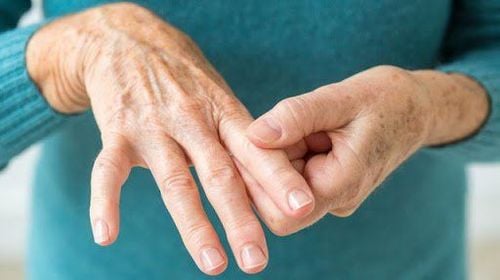
Viêm khớp dạng thấp là một trong những nguyên nhân gây ra viêm khớp cùng chậu
3. What are the symptoms of sacroiliitis?
The most common symptoms of sacroiliitis include:Fever Pain, usually low back, leg pain (possibly in front of thighs), hip and/or buttocks pain Pain that gets worse when sitting longer and worse when rolling over in bed Tightness in the hips and back, especially after getting out of bed in the morning or after sitting still for a long time
4. How is sacroiliitis diagnosed?
The first step in diagnosing sacroiliitis is usually a thorough history and physical examination of the joint. The doctor will ask questions to determine if there are any underlying disorders that may be causing pain at this site for the patient. Certain signs can also help differentiate pain from the sacroiliac joints, lumbar spine, or hip area. Accordingly, there are various tests that assist the doctor to perform during the examination that can help determine the source of this pain.The next step in diagnosing sacroiliitis is usually a simple x-ray of the pelvis. Furthermore, the patient may also have an X-ray of the entire lumbar spine depending on what the physician finds on the history and physical examination. In addition, computed tomography (CT) can also help diagnose sacroiliitis thanks to more detailed features of the joints. Both X-rays and CT scans can help identify sacroiliitis as hardening of the joint surface along with bone erosion around the inflamed sacroiliac joints. Not only that, but magnetic resonance imaging (MRI) tools can also be useful, both to help better evaluate soft tissues, including muscles and ligaments, and to be able to identify small fractures that may not be visible. X-ray findings also confirm inflammation in the sacroiliac joint by the presence of excessive fluid in the joint.
Another useful method for diagnosing sacroiliitis is administering an injection that can numb the irritated area, thus helping to pinpoint the exact source of pain. Local anesthetics such as lidocaine along with steroids are injected directly into the joint, performed with the help of an X-ray machine to verify the injection is in the joint. If the patient relieves pain after the injection, it can be assumed that sacroiliitis is the source of the pain.

Bước đầu tiên trong chẩn đoán viêm khớp cùng chậu thường là khai thác bệnh sử kỹ lưỡng và khám chức năng khớp trên lâm sàng
5. What are the treatments for sacroiliitis?
The treatment of sacroiliitis will depend on the signs and symptoms of the patient, as well as the cause of the disease. Accordingly, treatment measures include:5.1 Medication Depending on the cause of the pain in sacroiliitis, the doctor may prescribe a group or a combination of the following drugs:
Drugs pain relief. Muscle relaxants, which help reduce muscle spasms related to the sacroiliac joint TNF inhibitors. Tumor necrosis factor (TNF) inhibitors — such as etanercept (Enbrel), adalimumab (Humira), and infliximab (Remicade) — often help reduce sacroiliitis associated with spondylitis joint adhesion. 5.2 Physical therapy Doctors or physical therapists can help patients perform a variety of range-of-motion and stretching exercises to maintain joint flexibility, while strengthening exercises can also help improve joint mobility. stabilizes the muscle groups around the sacroiliac joint.
5.3 Surgery and other procedures If the above methods still do not relieve the pain, your doctor may recommend:
Joint injections: Corticosteroids can be injected into the joint to reduce inflammation and relieve pain. Radiofrequency pain relief: Radiofrequency energy can permanently damage or partially destroy the nerve tissue that causes pain. Electrical stimulation: Implanting an electrical stimulator into the sacrum can help relieve pain from sacroiliitis. Fusion surgery: Although this surgery is rarely used to treat sacroiliitis, fusing the two bones together with metal hardware can sometimes relieve pain caused by local inflammatory reactions. out.
6. Lifestyle changes and adjustments at home

Một số loại thuốc giảm đau không kê đơn như ibuprofen có thể giúp giảm đau tạm thời
Resting, adjusting to, or avoiding activities that aggravate pain can help reduce swelling and inflammation in the sacrum. In which, choosing the right posture in living and working is an important thing.
Cold and hot compresses: Alternating ice and high temperature topical applications can also help relieve sacral pain.
In summary, sacroiliitis causes uncomfortable pain in the lower back and buttocks due to an inflammatory response from spontaneous injury or trauma to the joint between the spine and pelvis. Because sacroiliitis pain can be similar to other conditions, an accurate diagnosis is important to determine the source of the pain and develop a treatment plan to improve symptoms. , restore the movement function of the body.
Vinmec International General Hospital with a system of modern facilities, medical equipment and a team of experts and doctors with many years of experience in medical examination and treatment, patients can rest assured to visit. Examination and treatment of sacroiliitis at the Hospital.
Please dial HOTLINE for more information or register for an appointment HERE. Download MyVinmec app to make appointments faster and to manage your bookings easily.
SEE MORESacroiliitis in men: What you need to know Pain from sacroiliitis in women Ankylosing spondylitis: Causes, symptoms, diagnosis and treatment





